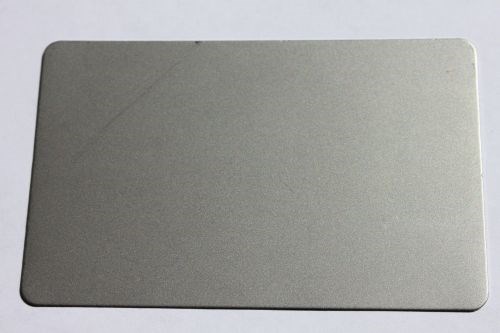Stainless Steel Deburring
What is a #8 stainless finish, and can we use vibratory methods for our requirements?
Q. We are cutting and machining a 304 stainless, 2'' diameter by 5'' long, cold-rolled, 2B-finished round tube. We need to deburr the parts, but we also have to blend the machined areas to match the original 2B mill finish. Some of the same parts also require a #8 finish. What is a #8 stainless finish, and can we use vibratory methods for our requirements?– J.K.
A. You have three finishing requirements: deburring, refinishing and refining an existing finish. These are all excellent applications for vibratory/mass finishing.
Featured Content
Let’s define the two finishing specifications (2B and #8) and then discuss the vibratory process solutions.
Finish Specification:
Stainless steel finishes have been standardized by the Stainless Steel Sheet Manufacturers Association. Two of the standard finishes are the 2B and #8. Below are their descriptions and how the mills arrive at these finishes.
2B is a cold-rolled finish with a final polish-roll pass that produces a matte finish with a minor sheen. This is the standard and most common stainless sheet, plate and cold-rolled tubing finish. Standard 2B mill finishes are on both sides of the sheet.
#8 is a bright, buffed finish with no lines. It is produced by the mill starting with a 2B finish, then multiple passes with a rigid heavy-duty wide-belt sander using a 120-grit-, 150-grit- and then 320-grit-coated abrasive polishing belts.


2B finish # finish
The sheet is then finished with a sisal-cut buff process that produces a fine-line, bright finish. The final finish process is a color buff that removes the fine lines and produces a luster finish— expensive to produce but popular in the architectural and food-grade industries. Standard #8 finishes are on one side of the sheet.
Vibratory Process Recommendations:
To deburr and refinish the machined area to its original 2B finish, we recommend a one-step, 1-hr vibratory process using a ⅜'' × ¼'' ceramic triangle media capable of cutting with a good finish. This should include a flow-through compound system using a soap that lubricates and brightens to assure a consistent finish. The vibratory machine should be set up to produce 4 to 5 mm of amplitude of energy.
To obtain the #8 finish, we recommending the following:
- Start with the 1-hr ⅜'' × ¼'' triangle media process described above.
- Use a secondary 2- to 3-hr process with a ⅜'' high-density zirconium polyester plastic cone cutting media. The same compound and machine setting can be used as in step. This will smooth the surface and prepare it for the final third-step brightening process.
- Brighten/burnish with a 1-hr process in a 3- and 4-mm mix of porcelain burnishing ball media. Use an acidic (4-5 ph) burnishing compound with very low flow rates to avoid excessive foaming. Use the same machine amplitude setting as in steps one and two.
Water quality will vary from city to city, which can affect the brightening process. Try DI water for better results.
This three-step mass finishing process for the #8 finish will not remove excessive imperfections such as scratches, pits or dings. A 320-to-400-grit-coated abrasive polishing process prior to the mass finishing process may be required. Excessive machining lines may also require an increase in the step-one ceramic cut process time cycle.
A round stainless tube requiring a #8 finish is a great application for mass finishing because of its round, single-point reflectivity. A large flat area part requiring a #8 finish is less successful, because a flat surface area reflects more visual surface depth, which amplifies any imperfections, therefore requiring a polishing/buffing process.
RELATED CONTENT
-
Buffing & Polishing: The Need for Speed
The correct peripheral speed is an important consideration in getting the right results from your buffing operation. A buff that is turning too fast or too slow may result in damage to the buff or to the workpiece.
-
Taking the (Oxide) Edge Off
Metal fabricators that laser-cut with oxygen take steps to prepare parts better for powder coating.
-
How to Select the Right Flap Disc
Consider these five variables to determine what fits your application.



















